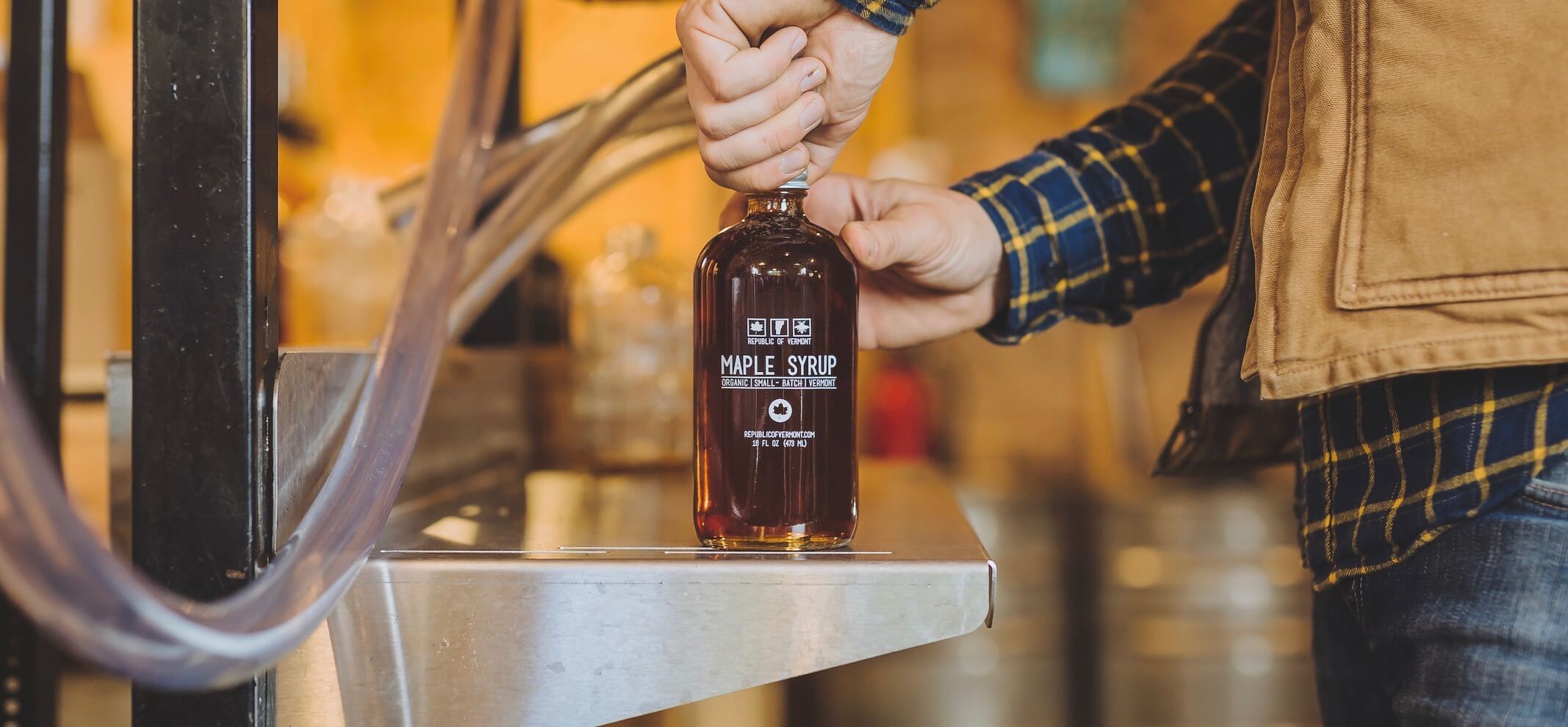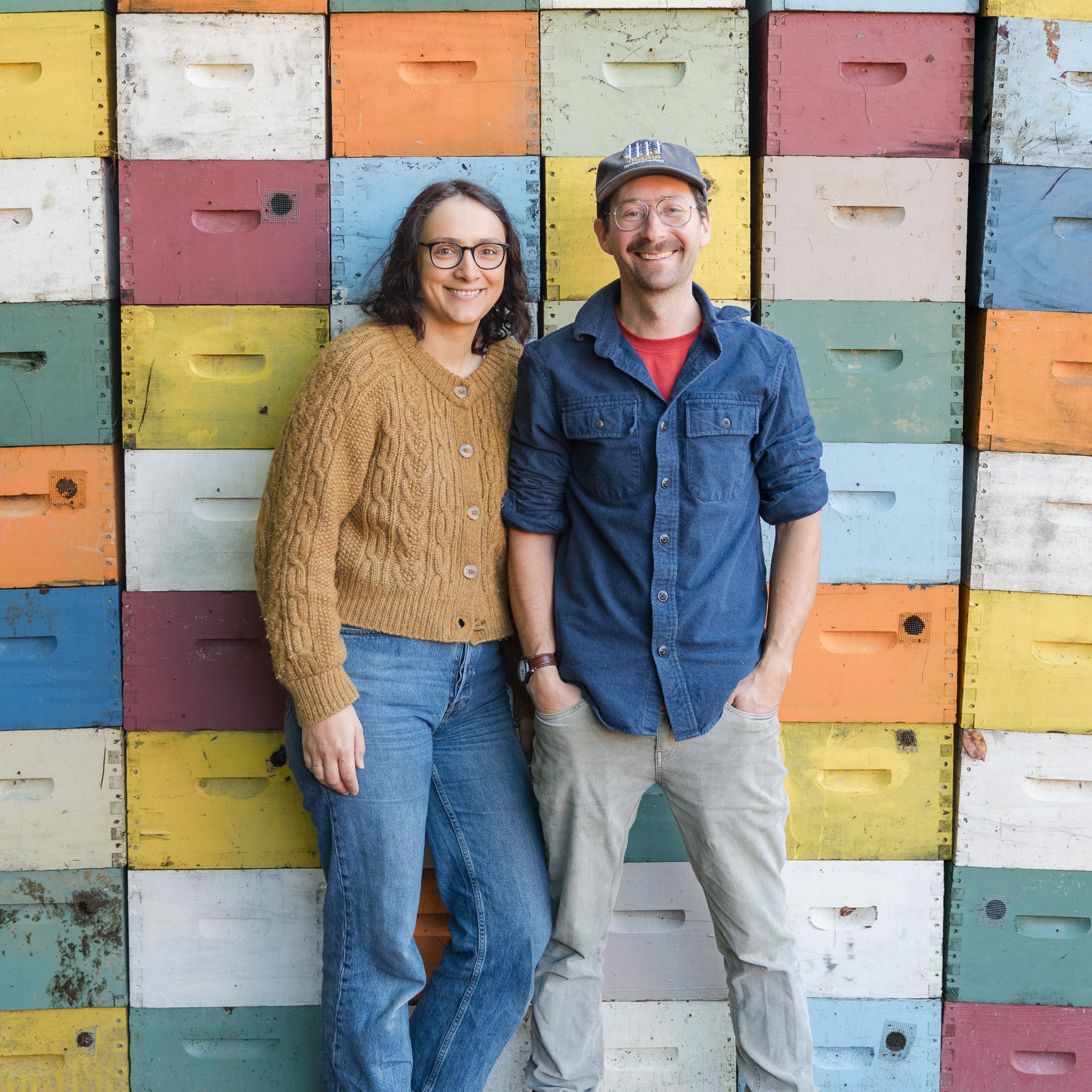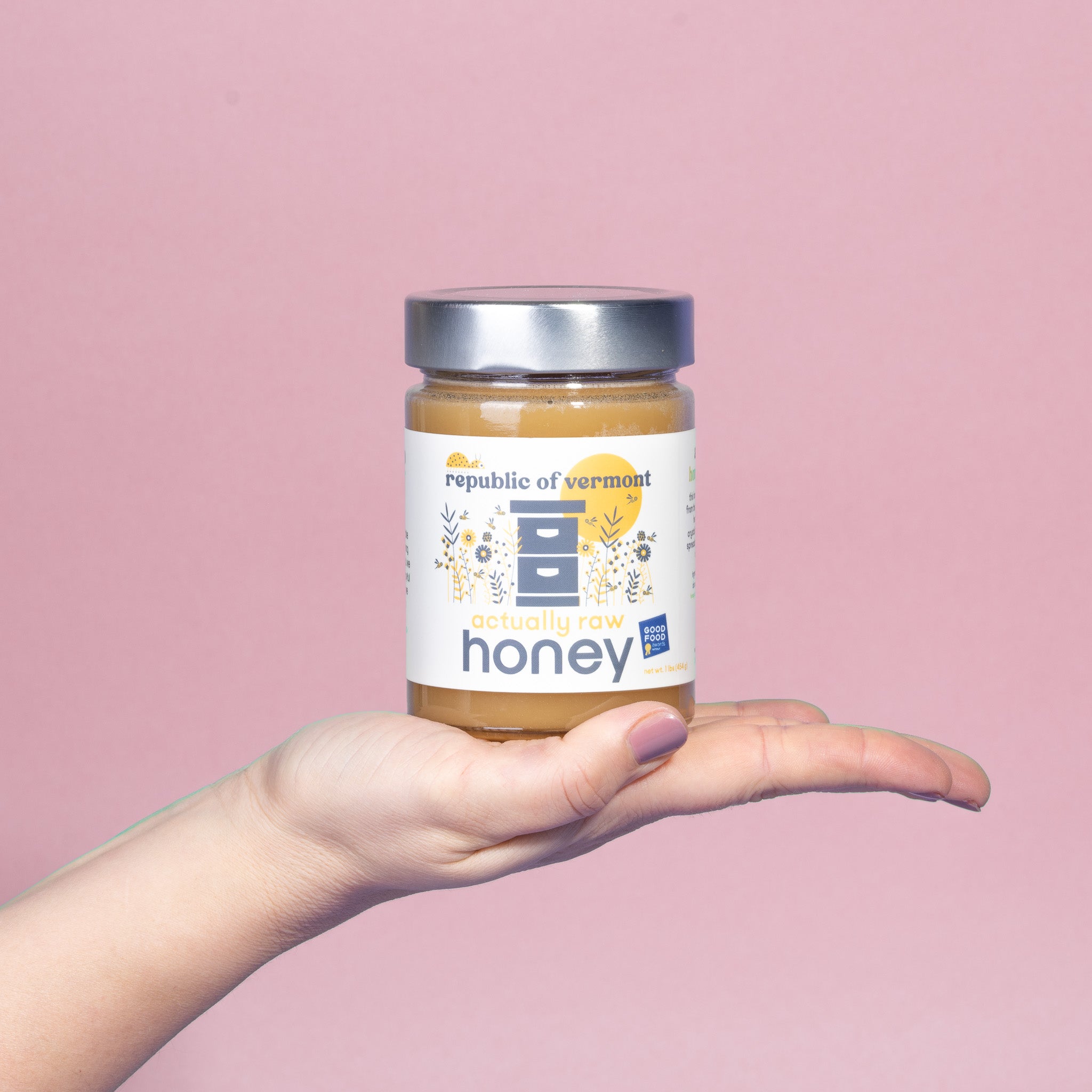Article: What is Organic Maple Syrup?

What is Organic Maple Syrup?

Isn't all maple syrup organic? That's a question we get all the time and while it is true that all maple syrup is maple tree sap that’s been boiled down to syrup, there are several very important factors that set organic maple syrup apart.
The two largest pieces that are taken into account when certifying maple syrup as organic are forest management practices and food safety. Both of these elements combine to ensure that the certified organic maple syrup you buy has been produced in a manner that is not harmful to the forest ecosystem and is safe to consume.
Try our Organic Maple Syrup

Forest Management
Maple sap is harvested from what is referred to as a sugarbush; essentially a forest of maple trees. Each spring, small holes are drilled into each maple tree and sap flows down through spouts into tubing that carries it to the sugarhouse to be boiled. The sugarbush is a complex ecosystem made up of a vast variety of trees, plants and animals. Harvesting sap from maple trees can be a relatively low impact activity when organic standards are followed. When done incorrectly, sugaring can damage the overall forest ecosystem and create problems with soil erosion, tree health and wildlife habitat. Organic standards dictate everything from the number and depth of holes that can be drilled in a maple tree to best practices for logging to reduce residual stand damage and erosion. Both invertebrate and vertebrate pests can be a major problem in the forest and there are strict rules for their control which take into account ecosystem impact. Here’s a breakdown of several key factors in the certification of an organic sugarbush:
- Logging & Thinning
Logging gets a bad rap, but in reality, harvesting of timber in a sugarbush (or any forest) is not only allowed, but is recommended as a long term approach to maintain ecosystem health. A forest management plan is a requirement for organic certification and provides a comprehensive roadmap for how to best manage a sugarbush over a long period of time. Some of the main organic requirements for logging are proper placement of roads to avoid runoff and water quality issues, the protection of ecologically sensitive areas, the prevention of damage to unharvested trees and a criteria for the harvesting of different ages and species of trees.

- Tapping Standards
When done with care, tapping maple trees each season does not affect the overall health of the tree. When done improperly, tapping can leave trees structurally weakened and susceptible to disease. To ensure that maple trees can be tapped for many decades, the organic standards lay out rules for the tapping process that dictate the number of holes per tree based on the tree size, the depth of the drill hole and the distribution of tap holes around the tree trunk. Retapping a tree during the same season and tapping a tree that is too small (under 9” in diameter) are prohibited.

Food Safety
Maple sugaring largely exists in an unregulated world. It’s often assumed that since the sap is boiled for so long nothing can really go wrong, but in order to be certified organic, an inspection of the processing facility is required which ensures that basic food safety procedures are being followed. Keeping records of every barrel and bottle of maple syrup produced ensures traceability should there be a problem with the final product. Here are a few of the main items the organic inspector looks for:
- Lead Equipment
Up until the late 1990’s, most sugaring equipment used lead solder to bond metals together. Lead is a dangerous neurotoxin that can cause brain and kidney damage. Sugaring equipment lasts a long time so a lot of this lead soldered equipment is still in use. Obviously, that’s a problem from a food safety stand point so the organic certification requires that all equipment be lead free. That includes small brass fittings that can leach lead and are often found on pumps and plumbing fixtures.
- Food Grade Equipment
Sap storage tanks, pumps and piping must be food grade. There’s nothing worse than seeing non-food grade PVC piping or galvanized sap tanks that can leach toxins that are not safe for human consumption into a product.

- Defoamer
When sap is boiled, it produces foam which must be managed to prevent bubbles from overflowing out of the evaporator. Traditionally, this was done by adding cream, butter or animal fat to break the surface tension of the foam. This approach is no longer ideal given the proliferation of food allergies. Conventional maple syrup producers usually use synthetic defoamers which contain substances that are banned by the organic national list. Organic maple syrup producers use a natural vegetable oil based defoamer which doesn’t leave any residue in the maple syrup.
- Washing Equipment
Organic maple syrup producers are required to keep records of the washing of equipment and the type of soap or cleaners that are used. There are a number of soaps/cleaners which if not used properly can leave dangerous residue in the final product. Food safety rules require the cleaning of equipment on a regular schedule and the organic inspectors look at cleaning records to ensure a basic sanitary level.

Conclusion
Obviously, there is a lot that goes into producing maple syrup whether its conventional or organic, but organic producers invite an extra layer of scrutiny, effort, cost and documentation to ensure that the product the customer buys has been produced in a way that takes into account the effects we have on the forest ecosystem while also maintaining a clean food production facility and preventing contamination. There’s certainly nothing inherently wrong with conventional organic maple syrup, but the inspection and oversight of an organic operation brings the maple syrup production process out of the dark and assures the consumer that the product is safe and was produced responsibly.
Buy our Organic Maple Syrup
If you’re interested in more information on this topic here are some great links:
NOFA VT Organic Maple Syrup Guidelines:
https://nofavt.org/sites/default/files/uploads/docs/2014_vof_maple_guidelines.pdf
Proctor Maple Research Center:
https://www.uvm.edu/~pmrc/
Cornell Maple Research Program:
https://blogs.cornell.edu/cornellmaple/





